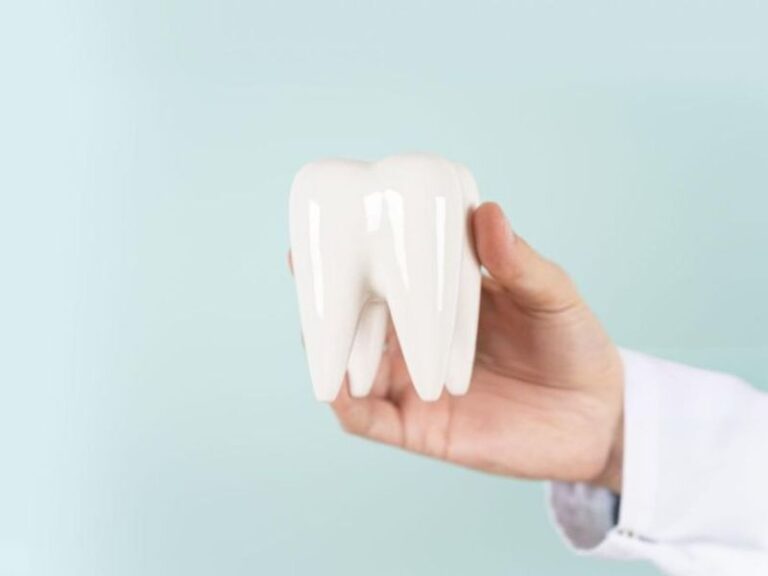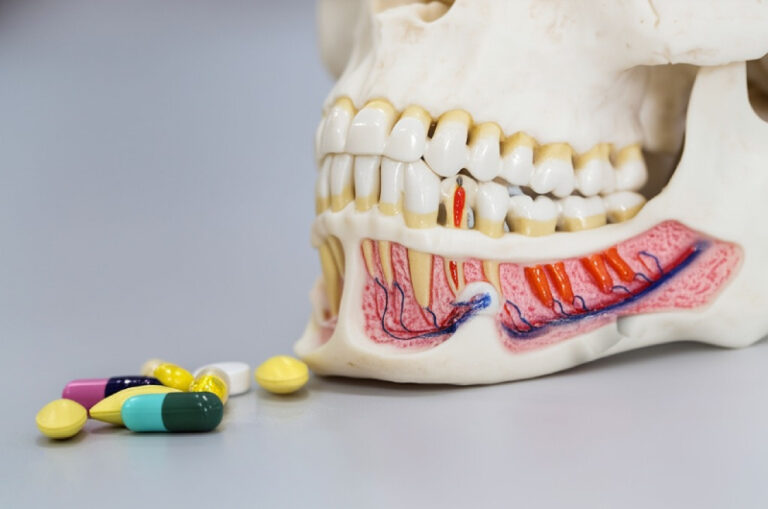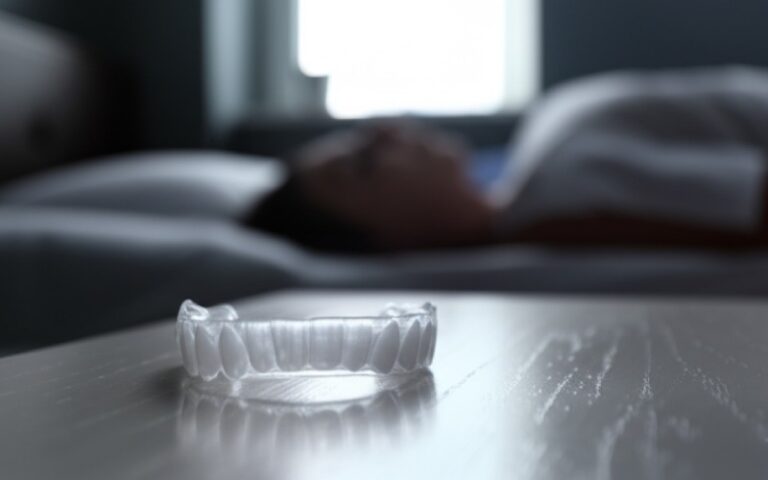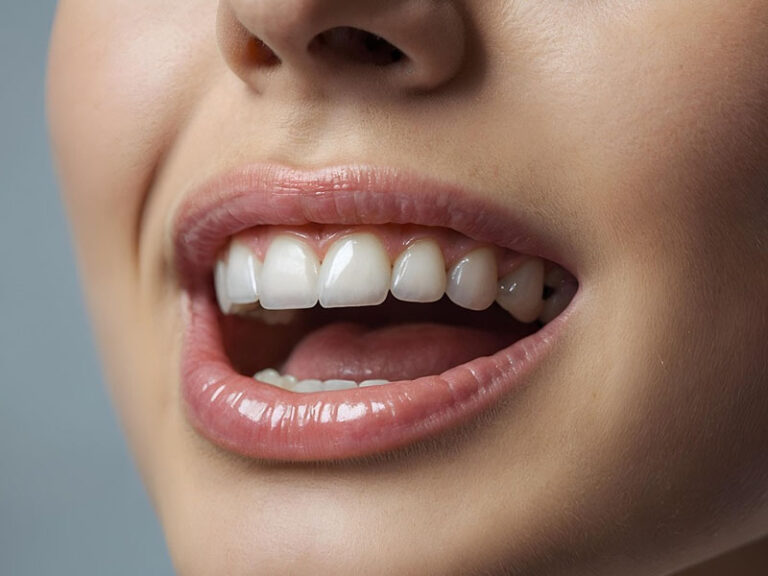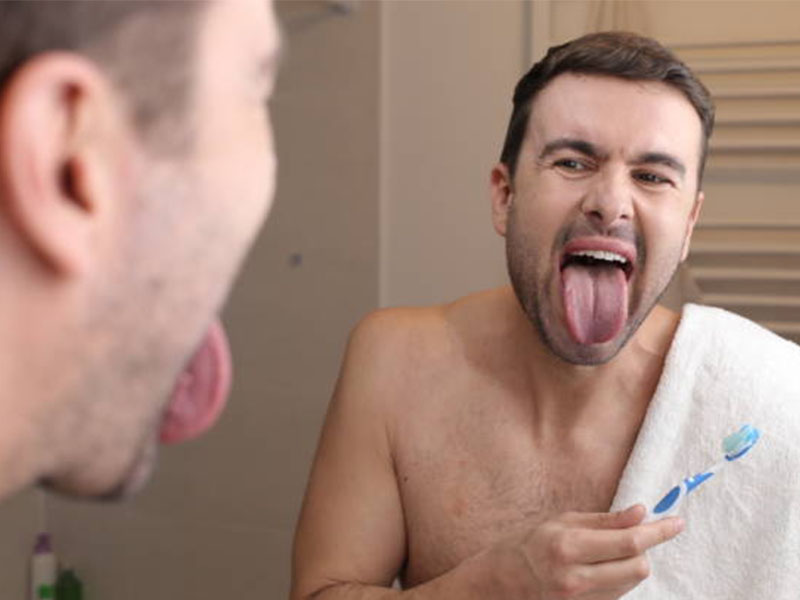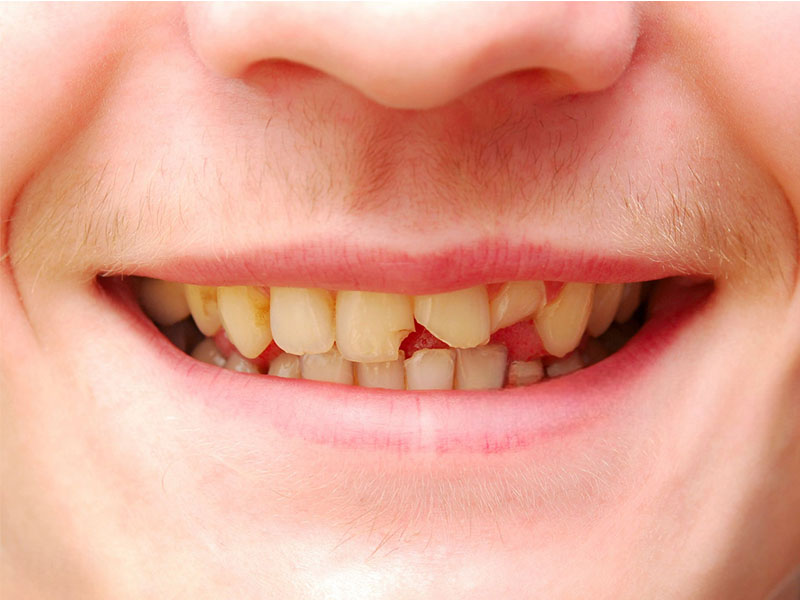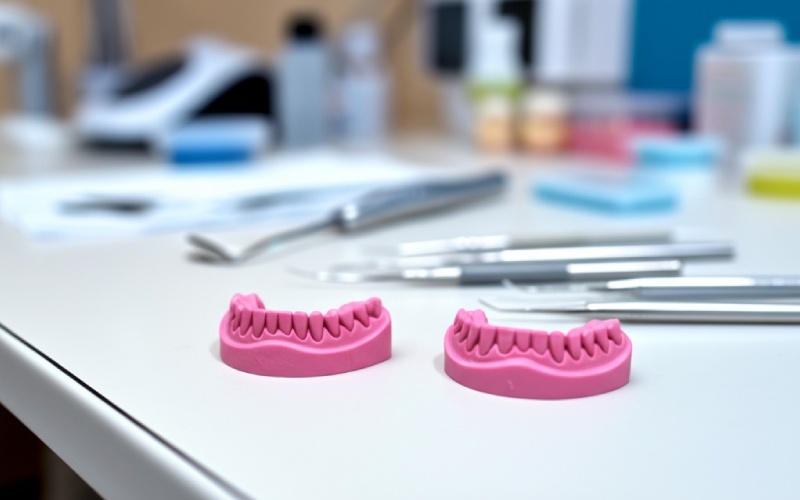
Wax Rims for Dentures: Your Simple Guide to a Comfortable, Confident Smile
That first appointment for your new dentures can bring up a lot of questions. Maybe you’ve heard your dentist mention a “wax rim” or “occlusal rim,” and you wonder, What on earth is that? Is it normal to need one? If you’re feeling a little lost, you’re certainly not alone. Getting the hang of all these steps can feel overwhelming, but don’t worry—let’s walk through this together in plain, friendly language.
Table of Contents
What’s a Wax Rim, and Why Do Dentists Use It?
Let’s get the main question out of the way first. “My dentist said they’re making me a ‘wax rim’—should I be concerned?” Short answer: Not at all! In fact, wax rims are a normal and important part of getting comfortable, natural dentures.
Think of the wax rim as a plan for your new smile. Just like a builder wouldn’t start building a house without a good drawing, your dentist uses this wax rim to plan how your new teeth should fit, feel, and look inside your mouth. This simple tool helps your dental team make sure your dentures:
- Fit snugly (no slipping or wiggling)
- Let you chew and talk the right way
- Look like your real smile
Is this step really needed? Yes. Studies show that badly-fitting dentures can make daily life tough—pain, hard to eat, even embarrassment. But when a skilled team uses that wax rim right, you end up with a denture that feels like it belongs in your mouth.
Fun fact:
Most full (complete) dentures and many partial dentures use a wax rim when they’re made. It’s not just for show—it’s the base for everything else that comes next.
The Simple Science: What’s Going On with Wax Rims?
What’s a Wax Rim, Anyway?
In simple words, a wax rim is a block of special dentist wax sitting on top of a sturdy base (called a record base) made to match your gums. It’s soft enough for your dentist to:
- Measure where your teeth should be
- Test how your upper and lower jaws close together (your “bite”)
- Decide the size and shape of your new teeth
- Check how your lips and cheeks sit with the rim in place
Think of it as a dress rehearsal before the final event—your dentist won’t set the teeth for good until they know everything fits well.
Why Does It Matter?
Remember, every mouth is different. Maybe you lost teeth years ago. Maybe your gums have changed. The wax rim lets your dentist try out where your teeth go—how tall they should be, where the middle of your face is, how your lips look—and make changes right then before anything is locked in.
Imagine…
Making dentures without a wax rim would be like a tailor making a suit for you without ever measuring you. The suit might look okay, but it won’t fit, feel, or work the way it’s supposed to—and you’d notice every day.
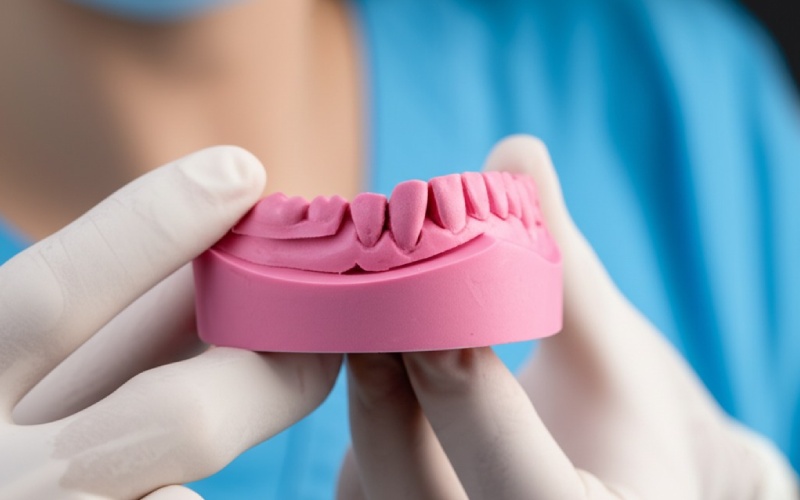
The Step-by-Step: How Wax Rims Help Make Better Dentures
Here’s what usually happens when your dentist (or prosthodontist, a dentist who’s trained to make dentures) uses a wax rim while building your new denture. If you’re ever confused at your visit, just ask your dentist to explain what’s happening. They’re there to help!
Step 1: Taking Molds—Making Your “Models”
First, your dentist takes soft molds (impressions) of your gums and any teeth you still have. Then the dental lab makes solid models out of these, kind of like tiny stone copies of your mouth.
Step 2: Making the Record Base and Wax Rim
On these models, the lab builds a hard “baseplate” that fits your gums just right. Then, they add the wax rim on top—this is roughly shaped like where your future teeth will go.
The wax is soft and easy to reshape, which lets the dentist make changes when it’s in your mouth.
Step 3: Checking and Adjusting the Fit
You’ll come into the office and the dentist will gently place the wax rim into your mouth. They will:
- Check how it looks on your face (does it make your cheeks look natural?)
- Mark where the “middle” of your face is, the “smile line,” and where the canine teeth should go
- Make sure it’s not too tall or short (so you don’t look too “toothy” or have sunken lips)
- Use tools like a “Fox plane” to see if the rim is nice and level with your face
Tip: Some dentists ask you to say some words or read out loud. This helps them hear if your “bite height” lets you talk well and easily.
Step 4: Recording Your Bite and Jaw Position
Here’s the more technical part—but it’s important. Your dentist wants to record two key things:
- Vertical Dimension of Occlusion (VDO): This is the spot where your top and bottom jaws close together gently. If it’s too high, your face might look too “long,” you’ll have trouble closing your lips, and eating and talking gets hard. Too low, and your chin may stick out, your face may look too short, and your jaw can get tired.
- Centric Relation (CR): This is the “centered” spot where your jaw joints and muscles feel most relaxed and even. Recording this the right way helps stop soreness or jaw popping later.
To get these records, your dentist will help you find a relaxed bite. Sometimes they’ll hold your chin or ask you to swallow, close slowly, or make some sounds. Then they’ll close the wax rims together and mark where your upper and lower jaws meet.
Step 5: Lab Work—Turning the Wax Rim Into Your Denture
When the dentist is finished making marks and changing things, they send the wax rim with the notes to the dental lab. This acts as a map, showing the technician exactly where to put your teeth, how tall they should be, and what shape works for your face and comfort.
What to Expect: Common Questions and Worries
Let’s answer some things people often ask about during this part:
Does the Wax Rim Hurt or Feel Weird?
Most people think the wax rim feels odd at first—after all, it’s a block of wax in your mouth! But it shouldn’t hurt, rub, or bring too much pressure. If you feel sore or uncomfortable, always tell your dentist right away—they can change the shape, height, or fit on the spot.
Will I Look Silly with the Wax Rim In?
Don’t worry—everyone looks a bit funny with the wax rim in. It’s not your real teeth! It’s just for the try-in part, and you’ll look normal again once your final denture is made from the info collected here.
How Many Appointments Will I Need?
You’ll often need two or maybe more appointments for this step, especially if anything needs extra fixing for a perfect fit. The important thing is patience: each visit saves you from future pain or problems with the finished denture.
Can I Skip the Wax Rim Part?
Skipping this step is like skipping your fitting when getting a tailored suit—you’re likely to end up with dentures that clack, slip, or just don’t look or feel right. Most dentists agree: spending the time now means fewer headaches later.
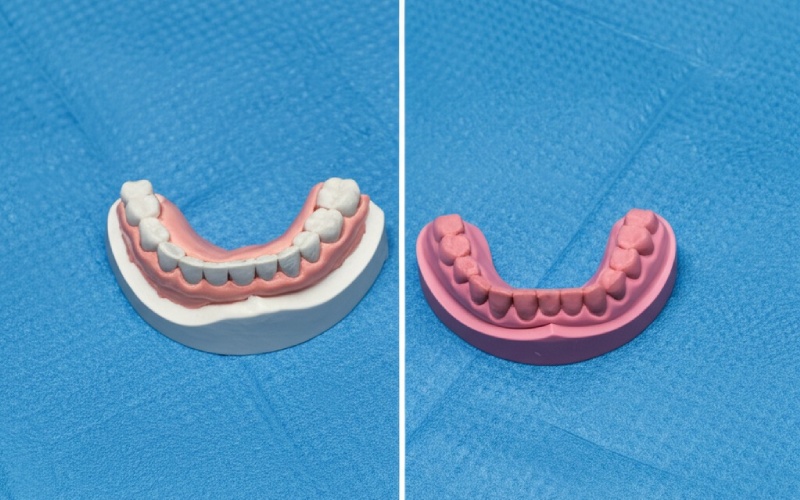
Solutions and Tips: Make Sure Your Denture Fits and Feels Good
Let’s go over some ways to make things go smoothly, from taking care of your mouth at home to getting help from your dental team.
What You Can Do at Home Before Your Appointment:
- Keep your mouth clean. Gently brush your gums and any teeth you still have. A clean mouth helps the wax rim fit better and lets healing tissues stay healthy (if you’ve had teeth pulled recently).
- Pay attention to how things feel. After your first time trying the wax rim, think about if anything feels “off”—are your lips tight, do you mumble some words, is there a sore spot?
- Write down questions. Bring up anything on your mind at your next visit. If you have a friend or family member with you, they might spot changes in your speech or face you didn’t notice.
What If the Rim Isn’t Just Right?
Sometimes, things aren’t perfect the first time—and that’s okay! Common problems might be:
- Rim feels too high or too low: This can make chewing, talking, or closing your lips hard. The dentist will trim or add wax to find the right spot.
- Jaw feels off or strained: Maybe your teeth don’t meet right, or your jaw is working too hard. Your dentist can reshape the wax or check your bite again to fix this.
- It just doesn’t look natural (like your face looks too full or too hollow): The dentist can shave or build up the wax rim until you see yourself in the mirror, just with new teeth on the way.
When to Call Your Dentist: Watch Out for These
Get help sooner if you see:
- Mouth sores popping up during the try-in
- Ongoing pain or rubbing
- Trouble swallowing, breathing, or shutting your lips
- Big changes in the way your face looks that don’t feel right
Remember, fixing things now means fewer problems later—and your comfort and voice matter. Always say what’s on your mind.
Who Needs a Wax Rim (and Who Doesn’t)?
Almost everyone who’s getting a full set of dentures—meaning they have no upper or lower teeth left—will use a wax rim as part of their treatment. This is true even if you’ve worn dentures before and you’re just getting a replacement.
You might also need a wax rim if:
- You’re getting partial dentures, especially if you’re missing lots of teeth and your “bite” has changed.
- Your dentist needs to fix your jaw alignment after missing teeth for a long time.
- You have special face shapes, or your mouth shape has changed a lot.
- Your speech or chewing need extra help for the best look and function.
Good candidates for wax rim-based denture work:
- Folks who are missing lots of teeth and have changes in how their jaws meet
- Anyone getting a full new upper or lower denture for their looks, speech, or eating
- Patients who want dentures that feel and look as close as possible to their old smile
Who might NOT need a wax rim?
- People getting tiny fixes or relines of a denture that already fits well
- Some people getting only a temporary or quick-fix denture (but sometimes a wax rim helps even then)
- Folks getting advanced digital dentures with 3D scanning—though many labs still do the wax rim step to double-check!
Always follow your dentist’s advice about this step. And if you’re not sure—just ask, “Why do I need a wax rim?” A good dentist will be happy to explain.
A Simple Recap: Main Points for a Happy Smile
Here’s what matters most:
- Wax rims aren’t “just extra.” They’re a key part of making dentures that fit well, look real, and help you chew and talk as you should.
- The wax rim is like a “test drive” for your new smile. Dentists use it to shape, test, and fix your bite and looks—before the real teeth are set.
- A well-done wax rim means fewer problems down the road. Good-fitting dentures last longer and work better. Careful work during the wax rim step stops sore spots, loose dentures, or speech trouble later.
- You’re not just a “mouth”—you’re part of the team. Give your thoughts and worries. Look in the mirror, read out loud, share feedback. The best dentures come from your input.
- Speak up at each visit. If something feels wrong or doesn’t look good—this is the best time to fix it, before anything is final.
Next Steps
- If you have a denture visit soon, ask your dentist:
- “Will I have a wax rim?” and
- “How will this help make sure my new teeth fit and look good?”
- At every try-in, be honest about how the wax rim feels. If you can, bring old photos of your smile—they help with picking tooth size, shape, and lip support!
- Keep your mouth clean and don’t wait to reach out if anything feels off.
Frequently Asked Questions (FAQs) About Wax Rims and Dentures
1. Can my final dentures be made without a wax rim?
It’s possible but not the best idea. The wax rim step helps stop problems and gives you the best fit and look.
2. Will I see what my new teeth look like before they’re done?
The wax rim part is the preview—your dentist may let you “try in” the setup and approve it before finishing the denture.
3. How long do dentures made with a wax rim last?
If you take care of them and they fit well, dentures made with a wax rim often last 5–10 years or even longer!
4. Why do my new dentures feel weird at first?
It’s normal for your mouth to need a week or two to get used to them. If you’re still sore after that, see your dentist—you may need a quick fix.
5. Does insurance pay for the wax rim step?
Wax rims are usually just part of the cost of making custom dentures.
The Bottom Line: Don’t Skip the “Plan” for Your Best Smile
If you’re about to get new dentures, that little wax piece could mean the difference between a smile you love and one you just put up with. A wax rim is more than just a step—it’s your chance to work with your dentist, making sure your dentures fit, look, and work the right way.
So next time you hear “wax rim for dentures,” you’ll know:
It’s a normal, needed part of getting good dentures. It’s how dental teams make smiles that help you eat, talk, and live your life confidently—every single day.
Ready for your best smile? Don’t shy away from questions, speak up, and make the most of every step. A little wax really goes a long way!
Sources:
- The American Dental Association (MouthHealthy.org)
- Journal of Prosthetic Dentistry
- Prosthodontics.org
- “Patient-Centered Denture Care,” International Journal of Prosthodontics, 2021
Got more questions, or ready to move forward? Book a visit with a good dentist or prosthodontist—because you deserve a smile that feels as good as it looks!

